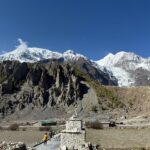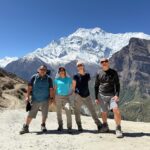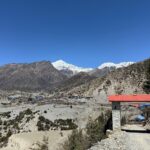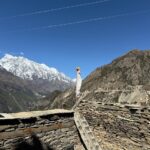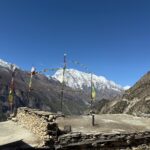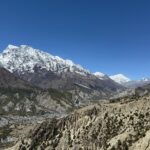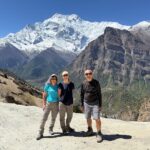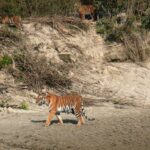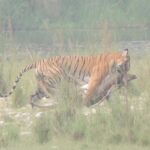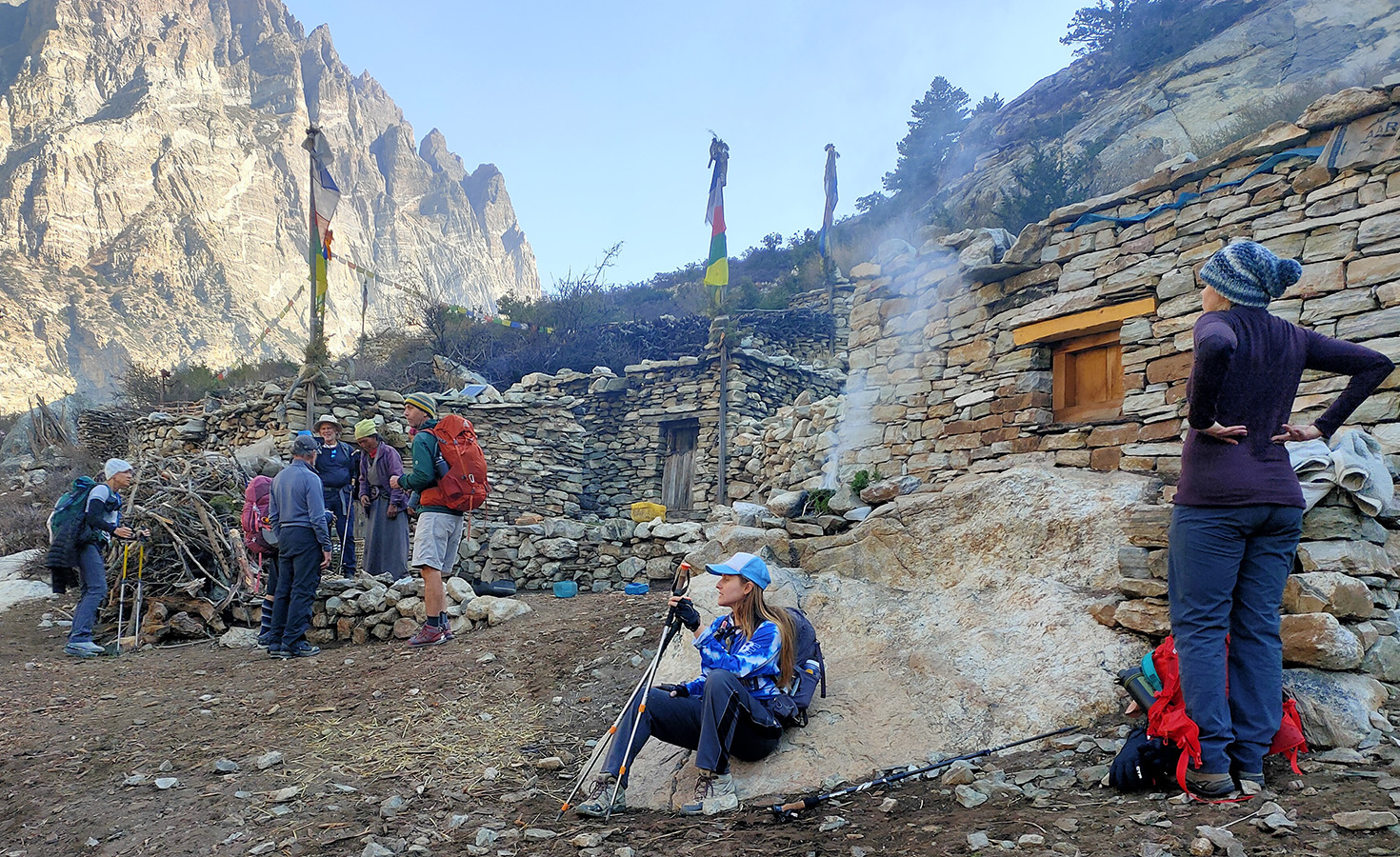
Group Trekking in Nepal
Trekking in a group in Nepal is one of the best ways to immerse yourself in the country’s stunning landscapes, vibrant culture, and thrilling adventures. Being part of a group provides safety, support, and shared experiences, making it perfect for solo travelers, friends, and families alike. With knowledgeable guides leading the way, trekkers can confidently tackle renowned routes such as Everest Base Camp, Annapurna Circuit, and Langtang Valley. Group treks also help lower costs, as expenses for permits, accommodation, and meals are shared among participants. The friendships formed with fellow trekkers enrich the experience, creating lasting memories. Whether you’re new to trekking or a seasoned adventurer, joining a group trek with a trusted operator like Getaway Nepal Adventure guarantees a memorable and well-organized journey through the Himalayas.
The benefits of group trekking in Nepal?
Group trekking in Nepal provides safety, companionship, and the advantage of sharing costs. Traveling with others offers motivation and support, particularly on tough trails. An experienced guide leads the trek, ensuring safety and proper navigation. Porters assist by carrying heavy loads, making the journey more manageable. Additionally, group trekking is more economical since expenses like guides, permits, and transportation are divided among members. It also allows for meeting like-minded travelers, fostering lasting friendships. Trekking in a group minimizes the risk of getting lost and ensures prompt assistance in emergencies, enhancing the overall experience and making the journey more enjoyable and memorable.
The ideal group size for group trekking in Nepal?
The ideal group size for trekking in Nepal typically ranges from 4 to 12 people. A smaller group offers a more personalized experience, while a larger group allows for better cost-sharing. Groups of about 6 to 10 people strike a good balance between camaraderie and manageability. Larger groups may encounter logistical issues when finding accommodation, especially in remote areas. Smaller groups can trek at a comfortable pace, making it easier for guides to ensure safety and effective communication. Keeping the group size reasonable guarantees a smooth, enjoyable, and well-organized trekking experience.
How can you join a group trekking in Nepal?
You can join a group trek in Nepal through a local trekking agency like Getaway Nepal Adventure, which organizes scheduled group departures. Many travel companies list available group treks online, allowing you to book in advance. You can also discover trekking groups through online forums, social media, or travel communities. Some travelers form groups upon arriving in Kathmandu or Pokhara by connecting with fellow trekkers. Joining a guided group trek ensures a hassle-free experience with expert guides, permits, and logistics taken care of.
Types of group treks are available in Nepal?
Nepal has a wide range of group treks that cater to various preferences and fitness levels. Popular classic treks such as the Everest Base Camp (EBC), Annapurna Circuit, and Langtang Valley are known for their stunning scenery and rich cultural experiences. For beginners, shorter treks like Ghorepani Poon Hill or Mardi Himal are perfect. If you’re seeking adventure off the beaten path, remote treks like Upper Mustang and Manaslu Circuit are excellent choices. Luxury treks offer enhanced accommodation and services. There are also themed treks focused on photography, yoga, or wildlife, providing unique experiences. Group trekking not only allows you to explore these diverse trails but also adds safety, enjoyment, and affordability to your journey.
Is group trekking cheaper than solo trekking?
Yes, group trekking is typically more affordable than solo trekking in Nepal. When you trek in a group, expenses such as guides, porters, permits, and transportation are shared, which lowers the cost for each person. Many accommodations, meals, and trekking packages also offer group discounts. Furthermore, logistical costs like hiring jeeps or flights become more economical when split among several trekkers. On the other hand, solo trekkers must cover all costs for guides and permits themselves. However, solo trekking does offer greater flexibility. If you’re seeking a budget-friendly yet well-organized trekking experience, joining a group trek with Getaway Nepal Adventure is a smart choice that provides both safety and companionship.
Fitness level is required for group trekking in Nepal?
The fitness level required for group trekking in Nepal depends on the trek’s difficulty. Easy treks, like Ghorepani Poon Hill, require basic fitness and regular walking ability. Moderate treks, such as Everest Base Camp and Annapurna Base Camp, require good stamina and prior hiking experience. Challenging treks, like Manaslu Circuit or Three Passes Trek, demand excellent fitness, endurance, and high-altitude trekking experience. Regular cardio exercises, strength training, and hiking preparation are recommended. Regardless of fitness level, trekking in a group helps, as team members support and motivate each other throughout the journey.
Accommodation during group treks in Nepal
Accommodation during group treks in Nepal primarily consists of tea houses (lodges) located in the trekking regions. These provide basic yet comfortable rooms featuring twin-sharing beds, blankets, and pillows. In more popular areas such as Everest and Annapurna, some higher-end lodges offer private rooms with attached bathrooms. However, in more remote trekking areas, the facilities tend to be simpler, with shared toilets and limited amenities. Most tea houses include communal dining areas where meals are served. For those looking for extra comfort, luxury lodges are available on certain routes. During peak trekking seasons, it’s advisable for larger groups to book in advance to secure better accommodations. Additionally, for specific trekking routes, homestays or camping options may also be arranged.
Are permits required for group trekking in Nepal?
Yes, permits are necessary for group trekking in Nepal. The specific permits required depend on the trekking region. For well-known treks like Everest Base Camp and Annapurna Circuit, trekkers must obtain a TIMS (Trekkers’ Information Management System) card along with National Park or Conservation Area permits. For restricted areas such as Upper Mustang, Manaslu, and Kanchenjunga, special trekking permits are needed, which must be acquired through a registered trekking agency like Getaway Nepal Adventure. The costs of permits can vary based on the trek and the season. Typically, your trekking agency will handle all the necessary permits, ensuring compliance with regulations and making the process easier for trekkers.
What safety measures are taken during group trekking in Nepal?
Safety is paramount during group trekking in Nepal. Experienced guides lead the treks, ensuring proper navigation and readiness for emergencies. High-altitude treks include first aid kits and oxygen cylinders, and guides are trained to manage altitude sickness. Trekking agencies keep an eye on weather conditions and adjust plans as necessary. Group trekking minimizes risks, as members can support one another. In remote areas, satellite phones or radios are used for emergency communication. Acclimatization days are built into the schedule to help prevent altitude sickness. It’s highly recommended to have travel insurance that covers medical emergencies and helicopter evacuations. A well-organized trek with a reputable operator like Getaway Nepal Adventure guarantees a safe and enjoyable experience, complete with expert guidance and effective risk management.
How is food arranged for group trekkers?
During group trekking in Nepal, food is typically provided at tea houses (lodges) along the route. Meals feature a mix of Nepali, Tibetan, and basic Western dishes, including dal bhat (rice and lentils), momos, noodles, pasta, soups, and pancakes. Breakfast usually consists of eggs, toast, porridge, or Tibetan bread. In more remote areas, the variety of food may be limited. Special dietary needs, such as vegetarian or gluten-free options, can often be accommodated. Group trekkers dine together, fostering shared meal experiences. For drinking, trekkers use boiled water, bottled water, or purification tablets. Proper nutrition is essential to keep trekkers energized throughout the journey.
What happens if someone gets sick or injured during the group trek in Nepal?
If a trekker becomes ill or sustains an injury, the guide evaluates the situation and administers first aid. For mild altitude sickness, rest and hydration are usually effective for recovery. If symptoms worsen, the guide will recommend descending to a lower altitude. In more serious cases, emergency helicopter evacuation can be arranged, which is typically covered by travel insurance. Guides are equipped with communication devices to reach rescue teams if necessary. Infections, dehydration, or injuries are treated with medication and first aid. Group trekking ensures immediate support, as fellow trekkers and porters assist during emergencies. Proper acclimatization, hydration, and following the guide’s advice help prevent health issues.
Can beginners join group trekking in Nepal?
Yes, beginners can definitely join group trekking in Nepal, as there are treks that cater to all fitness levels. Short and easy treks such as Ghorepani Poon Hill, Mardi Himal, and Langtang Valley are perfect for those new to trekking. Group trekking offers guidance, motivation, and safety, which makes it easier for novices. Experienced guides ensure that the pace is manageable, and scheduled rest days aid in acclimatization. While basic fitness is advisable, preparing through walking, hiking, and light cardio exercises before the trek can be beneficial. Beginners should opt for well-organized treks that include support from guides and porters, ensuring a pleasant experience. Trekking with reputable companies allows even novice trekkers to enjoy the stunning trails of Nepal.
The best time of year for group trekking in Nepal?
The ideal times for group trekking in Nepal are during autumn (September–November) and spring (March–May). Autumn features clear skies, stable weather, and stunning mountain views, making it the prime trekking season. Spring offers mild temperatures and vibrant rhododendron blooms, enhancing the overall trekking experience. Both seasons present excellent conditions with minimal rainfall and comfortable temperatures.
Winter (December–February) can be quite cold but is still feasible for lower-altitude treks, while the monsoon season (June–August) brings heavy rain and slippery trails, complicating trekking conditions. However, some rain-shadow regions, like Upper Mustang and Dolpo, remain suitable for trekking even during the monsoon. For the best weather, safety, and breathtaking mountain scenery, group treks are best scheduled in autumn or spring. It’s advisable to book in advance, as tea houses tend to fill up quickly during peak seasons.

